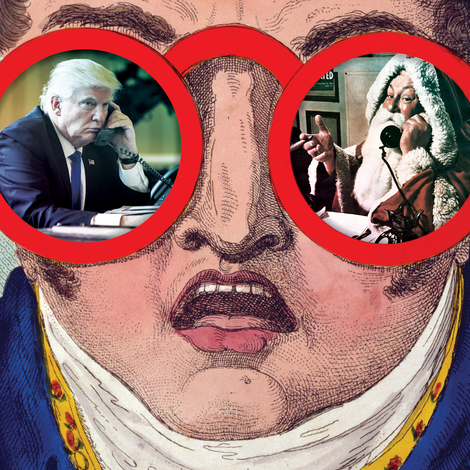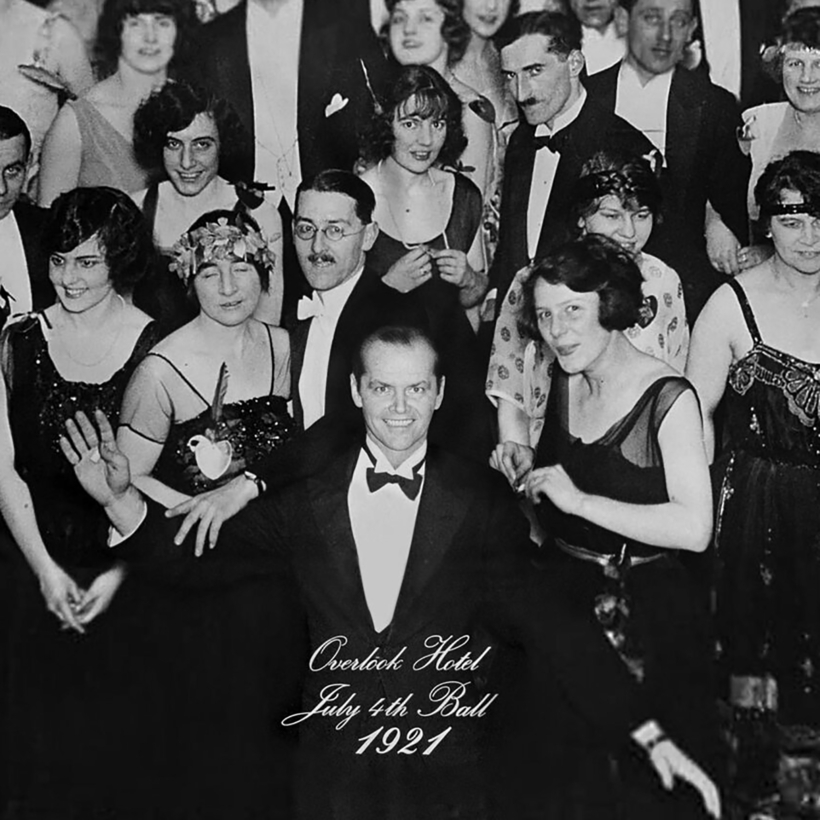Stanley Kubrick really knew how to end a movie. Once seen, the Star Child coda to the “Jupiter and Beyond the Infinite” sequence of 2001: A Space Odyssey can never be forgotten, condensing the climax of the short story on which it’s based into one indelible image. And is there anything at once more beautiful, funny, and horrifying than Vera Lynn’s “We’ll Meet Again” playing over the doomsday dénouement of Dr. Strangelove? These unshakable, vaguely nebulous finales are in many ways the key to the remarkable shelf life of Kubrick’s filmography.
The most enduringly mysterious ending of the lot, though, belongs to The Shining. For those who somehow still haven’t seen the film, the Overlook Hotel’s winter caretaker, Jack Torrance, is left to freeze to death in the hotel’s hedge labyrinth as his wife, Wendy, and son, Danny, manage to escape his cabin fever–induced, axe-wielding rampage. In a dramatic departure from the Stephen King novel on which it’s based, Kubrick closes by slowly zooming in on a black-and-white photo of a ball at the Overlook. Dated July 4, 1921, the group portrait features a maniacally grinning Torrance amid a sea of camera-facing partygoers. It raises conflicting questions: Did Torrance’s death on the grounds cause him to be absorbed by the haunted hotel? Or has he “always been the caretaker,” as the ghostly butler cryptically informed him earlier in the movie?
New York Times reporter Aric Toler recently found himself fixated on the image. Less because of the metaphysical questions it provokes, and more with the photograph itself. “For about a year, I worked with a retired British academic named Alasdair Spark to solve a mystery: where did the original photo from the end of The Shining come from, and where/when was it captured?” wrote Toler on X this past April 5. “Last week, we finally found the answer.”

At the start of their investigation, Spark discovered a book published in the 80s that claimed the photo—onto which Kubrick had Nicholson’s face superimposed—was sourced from a Warner Bros. archive in London. The only problem? “No such thing existed,” said Toler.
Knowing only that the man at the center of the pre-doctored photo was a U.K. jazz-dance instructor in the 20s named Santos Casani, the search for the original was on. “He had a prosthetic nose, so we could triangulate the rough date when his nose matched the photo.”
Hundreds—“maybe thousands”—of archival British-newspaper pages and the like yielded nothing. Finally, Murray Close, a still photographer who worked on The Shining, directed the pair to the BBC Hulton Archive, which has since been bought by Getty Images. Pay dirt! There they found the image in question—Kubrick had chosen a photograph of a Valentine’s Day dance at the Empress Ballroom in London’s Royal Palace Hotel, dated February 15, 1921, as the basis for the Overlook’s cursed final frame.
What is it about The Shining that—45 years after it was first released—still inspires such evergreen obsession? It seems as impossible to decipher as the ending itself. (For further examples, watch the 2012 documentary Room 237, which compellingly explores the myriad conspiracy theories surrounding the film.) But if nothing else, Toler and Spark’s quest proves that the movie hasn’t lost any of its power.
Spike Carter is a writer and filmmaker


